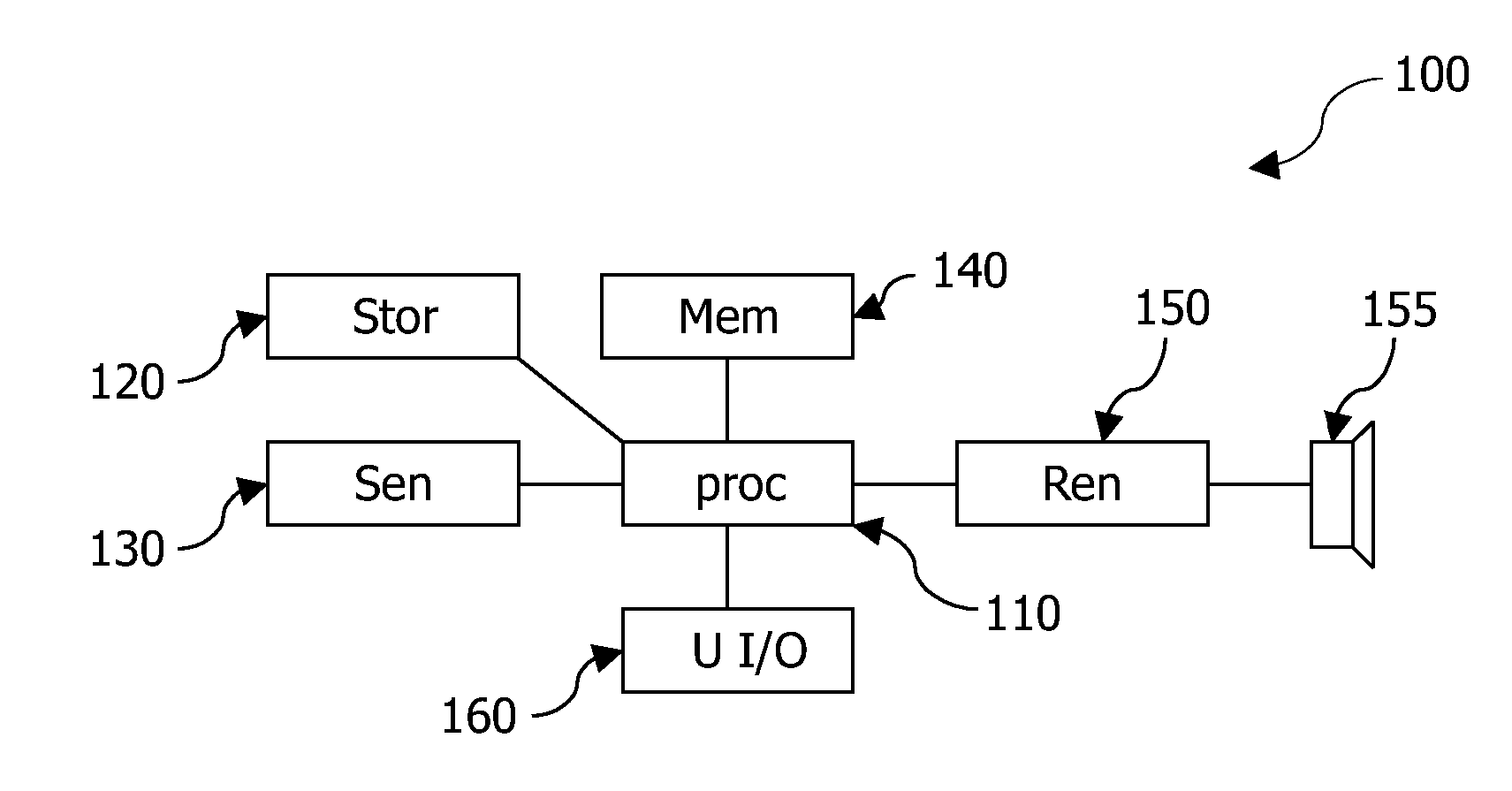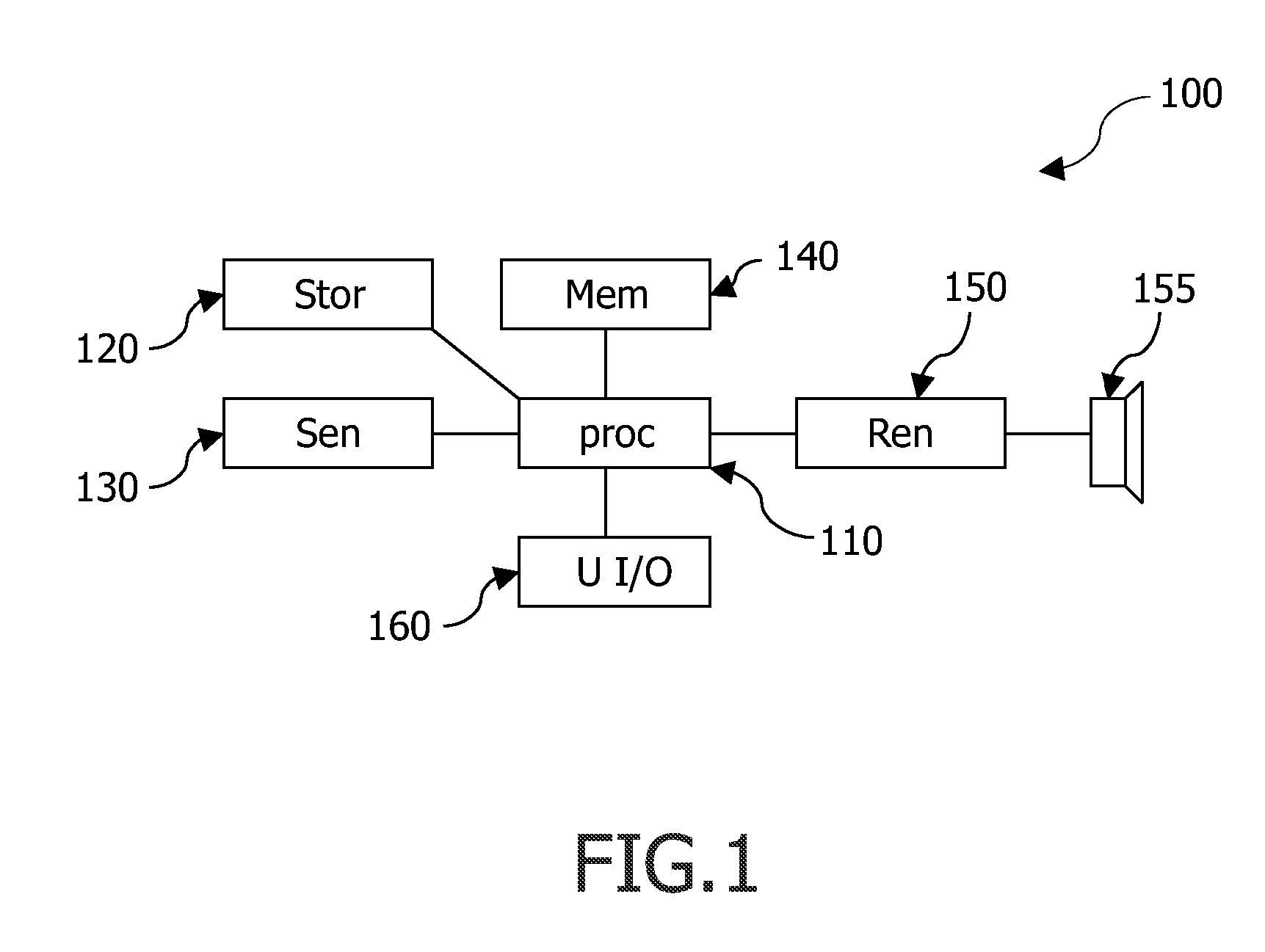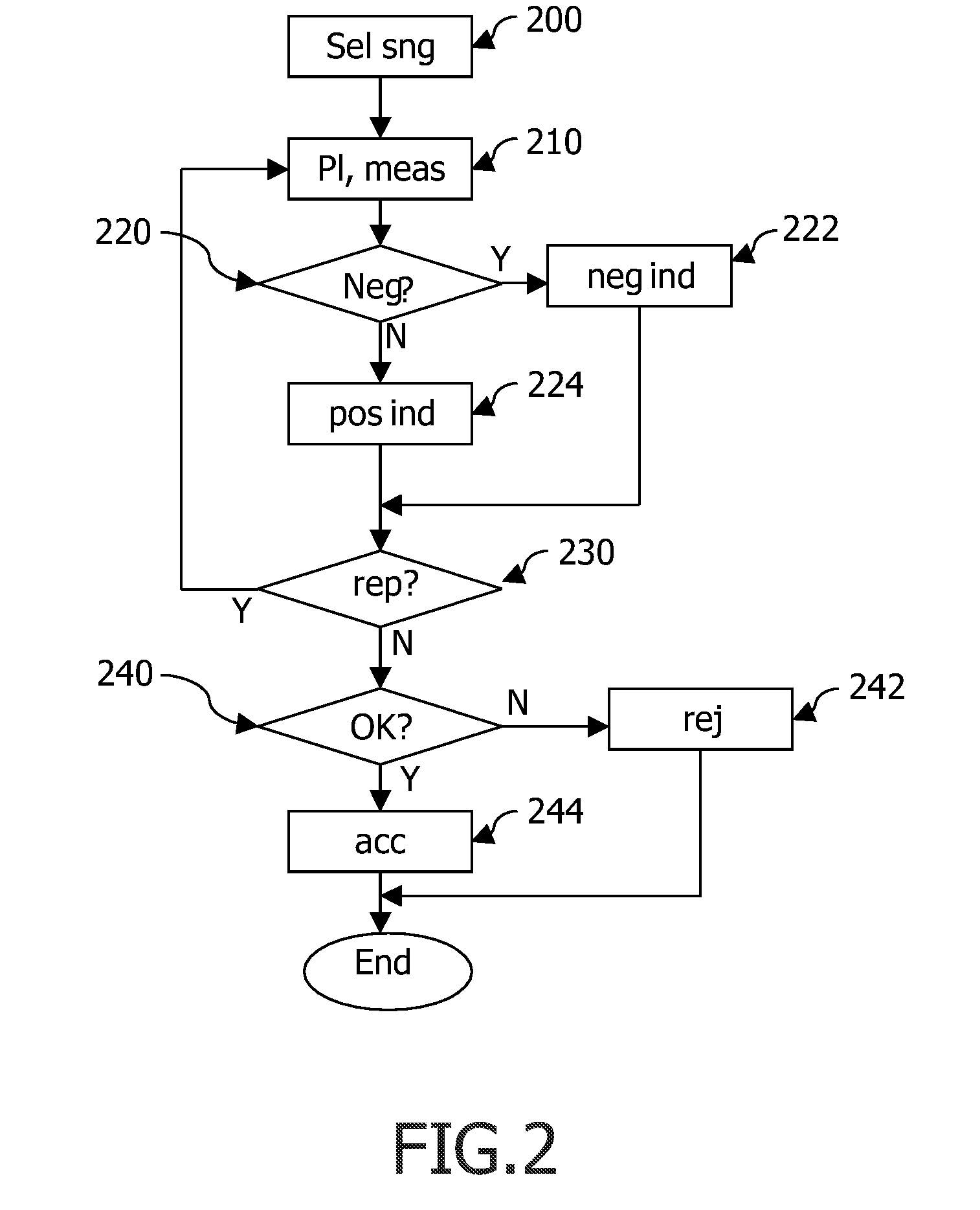Categorizing songs on a physiological effect
- Summary
- Abstract
- Description
- Claims
- Application Information
AI Technical Summary
Benefits of technology
Problems solved by technology
Method used
Image
Examples
Embodiment Construction
[0039]FIG. 1 shows a block diagram of an embodiment of the system 100 according to the invention. The system is used for categorizing songs on a physiological effect of the song on a user. The purpose is to select in this way songs that can later on be used to influence a physiological state of the user. The system operates automatically. It includes at least one sensor 130 for determining a biological parameter of the user representative of a physiological state of the user. In principle any physiological state of the user that can be influenced by music (and whose effect can be measured) may be influenced in the system. Examples of such states are states of mind, like sleeping, drowsiness, relaxed, alert / focused, etc. as well as states (moods) like happiness / sadness, etc. Any suitable sensor may be used. For example, the sensor 130 may measure a heart-rate, blood-pressure, sweat level on the skin, etc. Preferably also the brain-wave frequency may be measured. Particularly, the bra...
PUM
 Login to View More
Login to View More Abstract
Description
Claims
Application Information
 Login to View More
Login to View More - Generate Ideas
- Intellectual Property
- Life Sciences
- Materials
- Tech Scout
- Unparalleled Data Quality
- Higher Quality Content
- 60% Fewer Hallucinations
Browse by: Latest US Patents, China's latest patents, Technical Efficacy Thesaurus, Application Domain, Technology Topic, Popular Technical Reports.
© 2025 PatSnap. All rights reserved.Legal|Privacy policy|Modern Slavery Act Transparency Statement|Sitemap|About US| Contact US: help@patsnap.com



